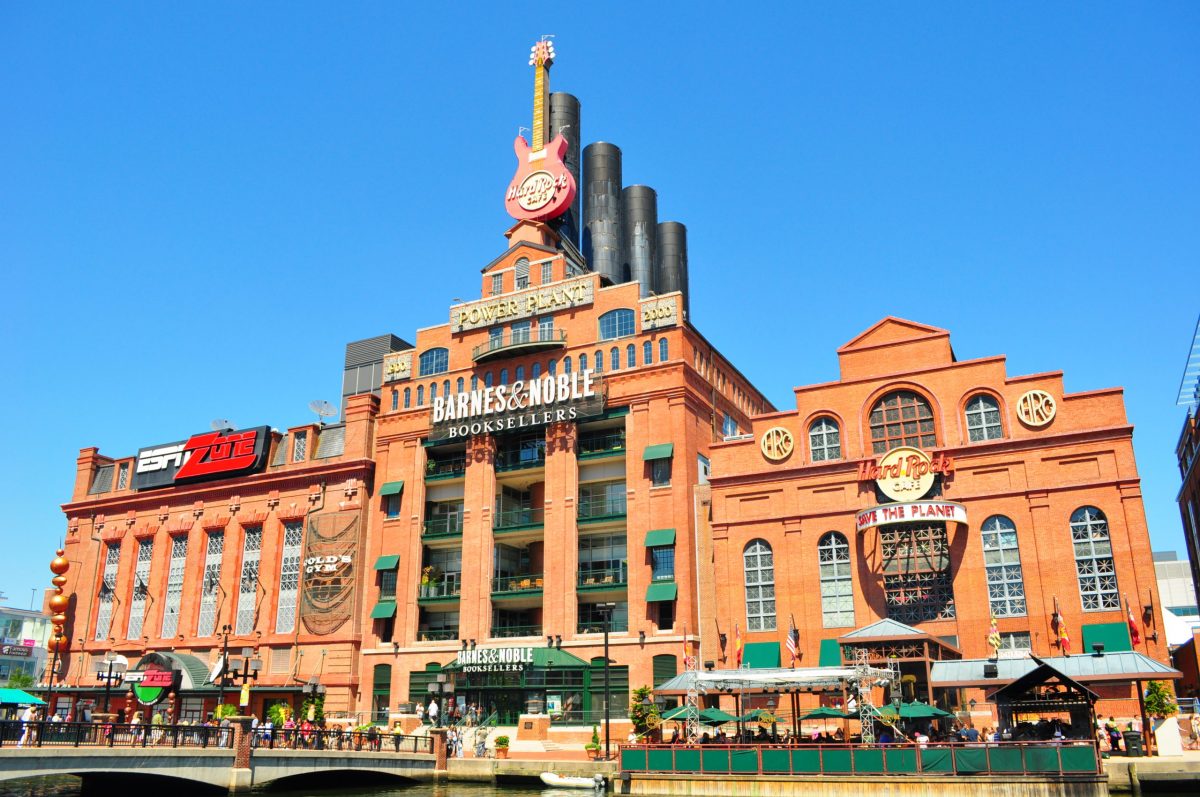When planning an adaptive reuse development, signage is not typically something that garners a lot of consideration – but the failure to do it right can negatively affect an otherwise great project.
Commercial signage has evolved quite a bit over the years, particularly with the addition of LED-powered signs and the gradual shift to suburban-style construction – including signage – in urban settings. But when it comes to historic properties, modern sensibilities are rarely the answer.
Take, for example, Pratt Street Power Plant in Baltimore – which we’ve written about here previously. While the project was a catalytic mixed-use development that helped re-energize the city’s Inner Harbor, the building’s historic façade is plastered with no less than a half-dozen prominent, brightly-lit LED commercial signs.
There’s nothing inherently wrong with adding modern signage to a historic building, nor with using LED signs for that purpose. But when they’re so prominent, and there’s so many of them, it begins to distract from what should be visual priority number one: the historic structure itself.
Ideally, modern signage added to historic structures should fit the building’s existing aesthetic, rather than trying to overrun it with modern flourishes. Subtlety over flashiness is the key.
It is, of course, a difficult balance to strike. The mission of making signage a secondary visual priority directly conflicts with most corporate branding strategies, which call for branding to be front-and-center wherever possible.
Many municipalities already have regulations in place to ensure that signage on adaptive reuse projects fit with their historic structures. In San Antonio, for example, historic preservation guidelines specify that signage should “complement, rather than compete with, the character of a historic building and the surrounding district,” and also bans pole signs, digital LED display signs, roof-mounted signs, and “suburban-style” monument signage. Similarly, municipal code in Long Beach, CA, suggests that signs for adaptive reuse projects should be “compatible with the architecture of the original building.”
Ultimately, the best way to prevent tacky modern signage being added to historic structures is through such regulations. Their presence – and enforcement – may be the difference between a community maintaining its historic character, or having it squandered by overzealous branding.


